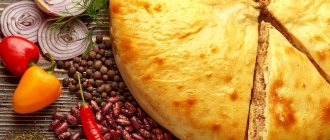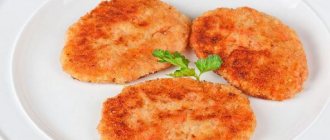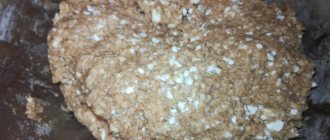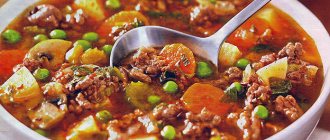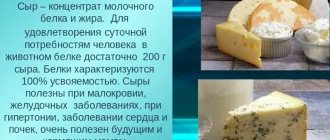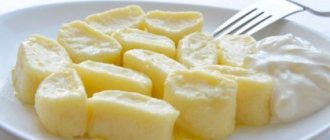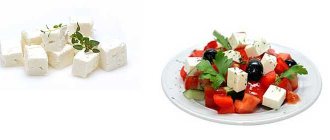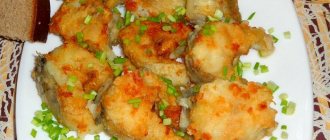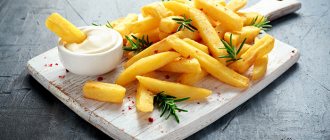Milk soup with noodles is a very simple, but healthy and, most importantly, tasty dish. Its calorie content is low, so it is suitable even for people who care about their figure.
Many people have known milk soup with pasta since childhood. But the recipe, although it is the simplest, is not known to everyone. Let's fill the gap!
Benefits for the body
Milk-based dishes are recommended for both adults and children. They reduce the risk of cancer and heart disease, improve the elasticity of blood vessels, strengthen vision, relieve swelling, lower blood pressure, and normalize stomach acidity. Milk contains calcium for bone growth and strengthening, as well as iodine, potassium, B vitamins, vitamins A, D, zinc and magnesium. Milk soups help remove excess fluid from the body, thereby eliminating swelling. They also help with hypertension, atherosclerosis, chronic diseases of the gallbladder and liver. Milk does not increase the secretion of gastric juice. It forms a protective film on the walls of the stomach and partially neutralizes the aggressive effects of gastric juice. That is why milk dishes should be present in the diet of people suffering from diseases such as peptic ulcers and gastritis with high acidity.
Milk soup is included in diets No. 1, 5a, 5p, 5, 7-10, 11, 15.
Milk is contraindicated for people with lactose intolerance. It is also called milk sugar. Lactose is an excellent source of energy and a nervous system stimulant. This substance maintains the normal state of intestinal microflora and ensures calcium metabolism in the body. However, 20% of the population does not absorb it. The enzyme lactase breaks down lactose into 2 components: glucose and galactose. Milk intolerance occurs due to low activity of this enzyme. Lactose is retained in the body and the fermentation process begins, which leads to gastrointestinal disorders: heartburn, a feeling of heaviness in the epigastric region and symptoms of intestinal upset. People with milk intolerance should use lactose-free milk when making milk soups.
Advice from experienced chefs
At first glance, it may seem that preparing milk soup should not cause any difficulties for housewives. However, we are often faced with the fact that the pasta is not cooked, the milk has escaped or burnt, or the soup has completely acquired the consistency of porridge. Such minor troubles make us refuse to prepare such a healthy and nutritious dish.
To make your milk-based soup truly tasty and aromatic, consider a few culinary tips when preparing it:
- To prevent the milk base from burning, choose only thick-walled dishes for preparing the first course;
- You can pour a little chilled water into the bottom of a saucepan or saucepan, and then add milk in a thin stream;
- Durum vermicelli varieties are best suited;
- Previously, pasta can be heat treated in water or immediately boiled in milk mixture;
- To make a dairy-based first course thick, add table starch (corn or potato);
- vermicelli should be added to milk, strictly observing the proportion of 1:2;
- thin vermicelli must be heat treated for several minutes;
- It is advisable to place small pasta in boiled milk and leave until completely swollen;
- Dairy-based first courses should be cooked with the addition of water and over low heat.
Contraindications
Some people are naturally sensitive to milk protein. In such cases, for preparing dishes and drinks, milk is diluted with boiling water. Milk protein contains essential amino acids, i.e. amino acids that the body must obtain from food. Insufficient intake of these substances into the body leads to dysfunction of the nervous system and growth arrest. This is why milk and dishes made from it are so beneficial for children. Research shows that people who eat a bowl of soup daily lose weight much faster than those who eat snacks. Liquid dishes quickly fill the stomach, which means they fill you up faster. However, do not forget that calorie content depends on the composition. Milk soup with dumplings is not as dietary as, for example, milk soup with noodles.
The benefits and harms of this dish?
It is interesting that at the moment there is no single opinion about the benefits of this dish.
Basically, the conversations of nutritionists and scientists boil down to the fact that milk soups can simultaneously be both healthy products and harmful to our body.
They are useful because they are absorbed effectively, improving digestion.
This dish made with milk is lower in calories compared to the same fried or stewed dishes, but is in no way inferior to them in nutritional value.
Satisfaction with these delicacies occurs easier and faster than with second courses.
Warm vegetarian soups with milk help restore the balance of fluids in the body and stabilize blood pressure, and tender vegetable puree soups are invariably included in the diet of patients as a light and nutritious food.
However, while listing the advantages of milk soup, we must not forget about the negative aspects of its use.
Many modern nutritionists, especially supporters of strict separate nutrition, talk about the following indisputable fact: milk drunk at the same time as food impairs proper digestion by diluting gastric juice.
This means that drinking dairy products and, at the same time, eating food is irrational and harmful to health.
Prolonged cooking of such a dish almost completely destroys the beneficial substances of the ingredients involved in the recipe.
And milk soup with meat is especially harmful: the meat squeeze, entering the intestines while warm, is instantly absorbed by it.
At the same time, the liver does not have time to process all the meat extracts, which then spread throughout the body in the form of toxic substances.
Therefore, speaking about the real benefits of milk soups, it is necessary to make a key amendment: “healthy” should be understood as exclusively vegetarian dishes, which, to a certain extent, include vitamin-rich milk soup with noodles - a favorite delicacy of children.
The most famous recipes
The properties and benefits of a dish depend on what ingredients are used. For example, milk soup with rice does not contain gluten, which means it can be eaten by allergy sufferers and small children. Rice is a source of B vitamins, essential for the health of the nervous system. Rice contains the most potassium, which plays an important role in maintaining normal blood pressure in the body. Milk soup with buckwheat can speed up metabolism (metabolism), thanks to the beneficial properties of buckwheat. It’s not for nothing that many celebrities lose weight with the help of this porridge. In addition, buckwheat contains macro- and microelements necessary for the human body: iodine, iron, phosphorus, copper, vitamins E and PP. The protein of buckwheat porridge is almost as good as that of meat. Milk soup with dumplings will appeal to young children. If you make the dough more liquid, the dumplings will melt in your mouth. In addition, this dish fills you up quickly. Dumplings contain the substance choline (vitamin B4) - the main building material for the human brain, as well as many vitamins (A, B, D, E, H and PP) and minerals (potassium, calcium, selenium, iron, iodine, fluorine, phosphorus and many others). Milk soup with pasta is a familiar recipe from childhood. This dish was eaten both in kindergarten and at school. However, like milk soup with noodles. Pasta should be made from durum wheat: it contains little starch and a fairly large amount of vitamins. Pasta made from soft wheat varieties is not only useless, but will also help you gain a couple of extra pounds. To make the dish more healthy and dietary, you should give up sugar and butter. It is better to choose a healthy alternative - natural bee honey. You also need to be careful with salt: too salty food contributes to fluid retention in the body and the appearance of edema.
Milk soup diet (menu for 3 days)
A milk soup diet does not mean you have to live on milk alone.
You can include cottage cheese and cheese, fermented milk drinks in your diet, and add vegetables and fruits as dessert. It is also recommended to drink natural juices, compotes without added sugar and herbal teas.
Milk soup can be eaten for lunch or dinner, but it is not recommended to eat it just before bed.
The first day
| Breakfast |
|
| Afternoon snack |
|
| Dinner |
|
| Dinner |
|
Second day
| Breakfast |
|
| Afternoon snack |
|
| Dinner |
|
| Dinner |
|
Day three
| Breakfast |
|
| Afternoon snack |
|
| Dinner |
|
| Dinner |
|
Milk soup with noodles
Calorie content per 100 g of finished dish: 110 kcal; proteins – 4.5 g, fats – 2.9 g, carbohydrates – 16.4 g.
Ingredients: - 0.5 cups vermicelli (spider web); - 0.5 liters of milk; - water; - salt.
Preparation:
Advice
- To prevent the milk from burning, first pour a little water into the pan.
- It may seem that there are not enough cobwebs. However, do not forget that it swells greatly. Milk soup with noodles should be quite liquid.
- Boil milk, add sugar and salt.
- Gently add the vermicelli, stirring constantly to prevent lumps from forming.
- Cook for 5-7 minutes over low heat until tender, stirring constantly. Pour into plates, add butter.
Vitamins in Milk soup with pasta
Milk soup with pasta contains the following vitamins: Mono- and disaccharides, Cholesterol, Ash, Water, Organic acids, Dietary fiber, Unsaturated fatty acids, Sodium, Potassium, Phosphorus, Magnesium, Calcium, Sulfur, Copper, Silicon, Aluminum, Strontium, Iodine, Manganese, Chromium, Fluorine, Molybdenum, Cobalt, Selenium, Tin, Zinc, Iron, Chlorine.
| Vitamin | Meaning |
| Vitamin B1 (thiamine), mg | 0,02 |
| Vitamin B2 (riboflavin), mg | 0,09 |
| Vitamin B6 (pyridoxine), mg | 0,04 |
| Vitamin B9 (folic), mcg | 4,5 |
| Vitamin C, mg | 0,3 |
| Vitamin E (TE), mg | 0,2 |
| Vitamin PP (Niacin equivalent), mg | 0,5648 |
| Vitamin B12 (cobalamins), mcg | 0,3 |
| Vitamin D, mcg | 0,04 |
| Vitamin A, mg | 0,02 |
| Choline, mg | 18,9 |
| Vitamin A (VE), mcg | 20 |
| Vitamin B5 (pantothenic), mg | 0,3 |
| Vitamin PP, mg | 0,1 |
| Vitamin H (biotin), mcg | 2,3 |
Milk soup with pasta
For this recipe, you can use any pasta except vermicelli: spirals, shells, noodles.
Tip Milk soup with pasta is suitable not only for lunch, but also for breakfast. This dish cooks very quickly and provides strength and energy for the whole day.
Calorie content per 100 g of finished dish: 113.8 kcal; proteins – 4.6 g, fats – 2.7 g, carbohydrates – 18.9 g.
Ingredients: - 0.7 liters of milk; - 200 g pasta; - water; - salt.
Preparation:
- Boil pasta in salted water. Place in a colander and add butter to prevent sticking.
- Heat the milk. Add pasta, sugar, salt, stir, bring to a boil.
Milk soup with pasta perfectly complements white bread sandwiches with cheese and butter. If there are no contraindications
Milk rivers, airy shores...
Traditional milk soup is a tender and light dish that is either entirely cooked in milk, or some of its ingredients are first boiled separately in water, and then milk or cream is added to them and brought to a boil.
The culture of different nations contains delicious and appetizing recipes for a variety of dairy delicacies.
Some dishes are prepared using healthy grains, others with vegetables and fruits, and others with the addition of mushrooms and meat products.
A common ingredient in this dish is cream or butter, which is used to give this dish a more refined and mild taste.
Milk soup with rice
Calorie content per 100 g of finished dish: 73.8 kcal; proteins – 3.2 g, fats – 3.11 g, carbohydrates – 8.77 g.
Ingredients: - 0.4 liters of milk; - 30 g rice; - 100 ml of water; - salt.
Preparation:
- Rinse the rice thoroughly, add water and put on fire. After the water boils, reduce the heat and simmer for 10 minutes.
- Bring milk to a boil and pour into cooked rice. Cook for 15 minutes, stirring constantly.
- Add salt, sugar and butter if desired.
Advice Milk soup with rice is an excellent remedy for swelling. It is recommended for use by people with kidney disease.
Milk soup with buckwheat
Calorie content per 100 g of finished dish: 163.0 kcal; proteins – 6.9 g, fats – 3.2 g, carbohydrates – 28.3 g.
Ingredients: - 0.5 liters of milk; - 350 g buckwheat; - salt.
Tip Milk soup with buckwheat will be especially tasty if you heat the cereal in a frying pan before cooking.
Preparation:
- Boil buckwheat.
- Add milk, salt, sugar to the prepared buckwheat porridge. Boil.
Micro- and macroelements in milk soup with pasta
Milk soup with pasta contains the following elements: Mono- and disaccharides, Cholesterol, Ash, Water, Organic acids, Dietary fiber, Unsaturated fatty acids, Sodium, Potassium, Phosphorus, Magnesium, Calcium, Sulfur, Copper, Silicon, Aluminum, Strontium, Iodine, Manganese, Chromium, Fluorine, Molybdenum, Cobalt, Selenium, Tin, Zinc, Iron, Chlorine.
| Micro and macro element | Meaning |
| Mono- and disaccharides, g. | 3,4 |
| Cholesterol, mg | 4,9 |
| Zola, Mr. | 0,5 |
| Water, city | 74,7 |
| Organic acids, g. | 0,07 |
| Dietary fiber, g. | 0,7 |
| Unsaturated fatty acids, g | 1,1 |
| Sodium, mg | 34,4 |
| Potassium, mg | 106,9 |
| Phosphorus, mg | 67,3 |
| Magnesium, mg | 10,1 |
| Calcium, mg | 80,7 |
| Sulfur, mg | 23,8 |
| Copper, µg | 51,3 |
| Silicon, mg | 0,2 |
| Aluminum, µg | 33,4 |
| Strontium, mcg | 11,4 |
| Iodine, mcg | 6,1 |
| Manganese, mg | 0,0397 |
| Chromium, µg | 1,5 |
| Fluorine, mcg | 14,8 |
| Molybdenum, mcg | 4,1 |
| Cobalt, µg | 0,6 |
| Selenium, mcg | 1,3 |
| Tin, µg | 8,7 |
| Zinc, mg | 0,3121 |
| Iron, mg | 0,2 |
| Chlorine, mg | 78,3 |
Milk soup with dumplings
Calorie content per 100 g of finished dish: 107.7 kcal; proteins – 4.5 g, fats – 3.9 g, carbohydrates – 14.6 g.
Ingredients: liter of milk; egg; a glass of premium wheat flour; salt; 0.5 tbsp butter.
Preparation:
- Grind the egg and 0.5 tbsp. butter, add flour, mix. Add water to the consistency of sour cream, stir.
- Bring milk to a boil. Soak a teaspoon in hot milk, scoop out the dough and add to the boiling milk.
- Cook the dumplings covered for 4-5 minutes. Add salt, sugar, butter if desired.
How to introduce it into the diet?
- How to cook milk soup? All milk soups for children are prepared according to the same scheme. The base of the soup - vegetables, noodles or grains - is steamed or boiled until tender. Add the base to the boiling milk, reduce the heat and simmer the dish for another 10-15 minutes. To improve the taste of the soup, add butter, sugar, salt, fruit, and jam.
- This is a complex multi-component dish, so the mother must be sure that all its components are well tolerated by the baby and do not cause allergic reactions.
- Milk soup is prepared for one time and is not stored. If you choose noodles or pasta as the base, they will soften and lose their shape from storage.
- Any flavoring additives: salt, sugar, jam, fruits or berries are selected by the mother based on the baby’s taste preferences. If your child does not eat salt, sugar, jam, or has allergic reactions to any berries or fruits, then do not add them to the soup.
- The consistency of the dish will allow children from one year of age to cope with it. Milk soup can be a breakfast option or a first course for lunch.
Getting used to a new dish will pass without any unpleasant consequences if you listen to the following recommendations.
- The introduction of a new product begins with one spoon. If the first acquaintance passed without consequences in the form of an allergic reaction or intestinal disorder, feel free to include it in the children's menu.
- Whole cow's or goat's milk should be introduced into the diet when the child is nine months old or after one year. Drinking whole milk too early can lead to allergic reactions and digestive disorders.
- When the baby reaches nine months, diversify his diet with boiled durum wheat pasta. If your baby eats pasta on both cheeks and there are no negative consequences, increase the portion. But you shouldn't give him pasta more than two or three times a week.
- From ten to eleven months you can offer your baby milk porridge. However, it should not turn into the main meal, since it is a high-calorie product.
- Give your little one a taste of vermicelli milk soup a year - start with 1 teaspoon and gradually increase the portion to 100 ml.
- At 1.5 years old you can give 130 ml of milk soup, and at 3 years old - 200 ml.
- An enamel pan with a double bottom, any cast iron container or a multicooker is suitable for cooking milk noodles. It is not recommended to use aluminum containers for preparing baby food.
- The preparation time for the soup will take no more than 15-20 minutes. For taste, you can add butter (no more than 10 grams), dried fruits or jam to the dish.

